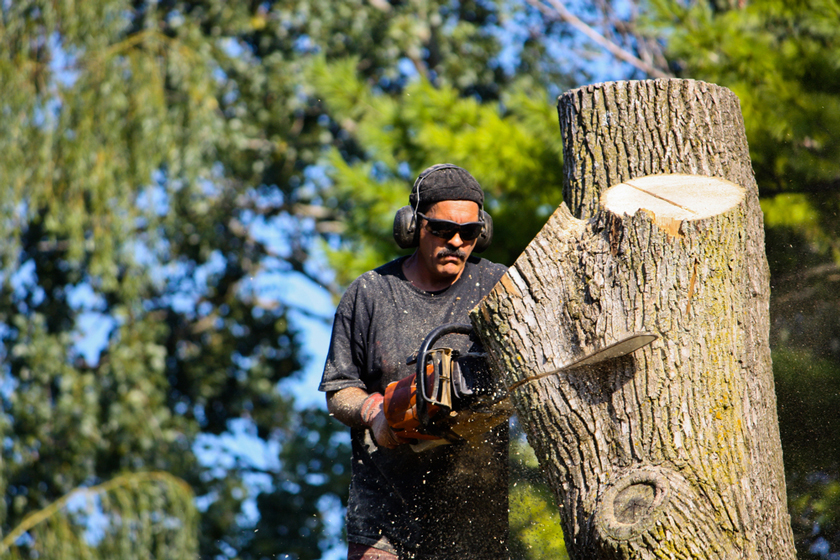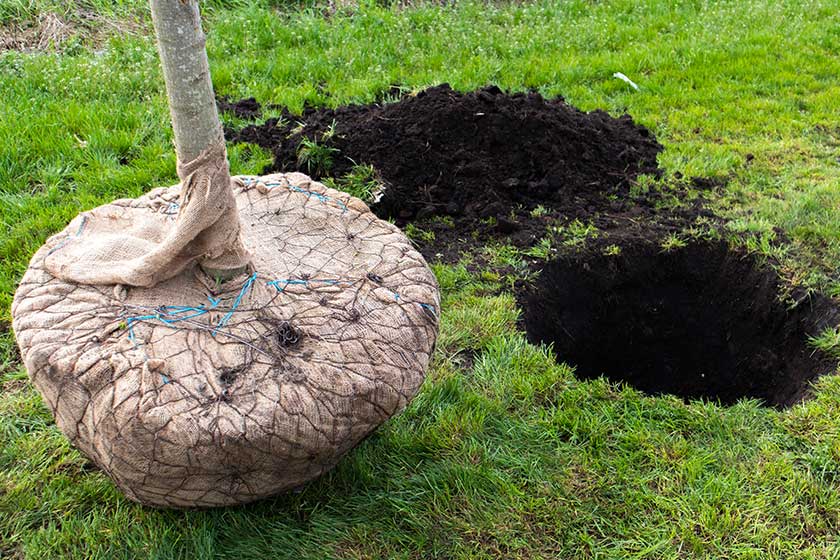Removing a tree from your property is a significant decision that often involves careful planning and budgeting. While trees enhance the beauty and value of outdoor spaces, there are circumstances where their removal becomes necessary. Issues such as storm damage, disease, or invasive roots threatening the stability of your home can require action.
Comprehending the costs associated with tree removal helps you prepare for this process. The pricing depends on various factors, including the tree’s size, location, and condition. Each project is unique. Therefore, knowing what to expect can help you make informed decisions.
Tree Height and Size
The height and size of a tree are the most significant factors influencing removal costs. A small tree, such as a fruit tree or birch, is relatively simple to handle and often costs less. Larger trees, including mature oaks or pines, require more time, effort, and specialized equipment to remove safely. Taller trees often have thicker trunks, which can add complexity to the job.
Cutting down a 30-foot tree with a narrow trunk will generally be less expensive than removing a similarly tall tree with a broader trunk. Additionally, trees with multiple trunks may require more labor, which increases the overall cost.
Professionals must assess not only the height but also the spread of the tree’s branches, as wider canopies may involve more time to cut and clear. The sheer size of some trees can require cranes or other machinery, adding to the expense. Understanding how a tree’s dimensions influence the process offers valuable insight into what drives costs.
Condition of the Tree
The tree’s condition is another important element in determining removal costs. A dead or diseased tree may pose safety risks during removal, particularly if its branches are brittle or its roots unstable. These factors often require professionals to take additional precautions to guarantee that the process is carried out safely. Diseased trees can also spread infections to nearby plants, which may make removal more urgent.
On the other hand, a tree that has already fallen is typically easier and less expensive to handle. However, if a fallen tree is entangled with structures or power lines, the complexity of the job increases, as does the price. Each scenario presents its challenges. Thus, an expert assessment can help determine the safest and most efficient approach.
Location And Accessibility
Where the tree is located on your property directly impacts the cost of removal. A tree positioned close to power lines, buildings, or fences requires extra care to prevent damage during the process.
Similarly, trees on uneven or rocky terrain can be more challenging to access. This adds time and complexity to the project. If the tree is located in a backyard or other hard-to-reach area, professionals may need to use additional equipment or techniques to complete the job, which can increase the price.
Accessibility also plays a role in determining how debris will be removed from the site. For example, if trucks or equipment cannot be brought close to the tree, more manual labor may be required, further raising costs. Considering the location’s impact on the overall project can help you better understand the pricing structure.
Additional Services and Costs
Tree removal often involves more than just cutting down the tree itself. Stump grinding is a popular add-on service that eliminates the remaining stump. It allows for a smoother landscape. Stump grinding prices vary depending on the size and depth of the stump. However, this service can be a valuable investment in the long-term usability of your property.
Debris removal is another service commonly requested, especially for larger trees with significant branches and foliage. Without this service, you may be left to handle the cleanup yourself, which can be time-consuming. Wood chipping is an additional option for processing tree material into mulch, which can then be used to enhance your landscaping.
Each of these services contributes to the total cost of the project. On the other hand, they also add value by improving the overall appearance and functionality of your space.
Emergency tree removal is another scenario where costs can vary significantly. Storm-damaged trees that fall unexpectedly may require immediate attention to prevent further harm to structures or property. Emergency work often involves higher pricing due to the urgent nature of the job and the specialized skills required to manage potentially hazardous conditions.
State And Regional Differences
The cost of tree removal varies depending on where you live. States with higher costs of living typically see higher pricing for landscaping services, while rural areas may include additional travel fees. Local environmental regulations, such as permit requirements, can also affect the total expense. For example, removing a tree in a densely populated urban area often involves more logistical challenges than in a suburban or rural setting.
Understanding regional averages helps you set realistic expectations for the cost of your project. Consulting with local professionals who are familiar with the area can offer more accurate estimates and insights into what specific factors may influence pricing in your location.
The Importance of Professional Help
Attempting to remove a tree yourself might seem like a way to save money, but it comes with significant risks. Without proper training and equipment, tree removal can lead to accidents, property damage, or personal injury. Professionals have the knowledge and tools to handle the process safely, reducing the chances of complications.
A licensed and insured team can assess the tree’s condition, plan the removal process, and execute the work with precision. They also handle debris removal and other services that enhance your property’s appearance. Hiring experts means you can have confidence that the job will be done correctly and efficiently.
How to Plan for Tree Removal
Planning for tree removal begins with consulting a professional to evaluate the situation. A detailed estimate helps you understand the scope of work, including any additional services you might need. This step removes the risk of surprises when it comes to cost. Discussing your specific goals, such as stump removal or wood chipping, allows the team to tailor the project to your needs.
Timing your project can also impact costs. Non-emergency work scheduled during slower seasons may come with lower rates or more flexible scheduling options. If you need to remove multiple trees, bundling services may save money compared to tackling each one individually.
Covenant Landscapes prides itself on delivering professional and reliable tree services tailored to each client’s unique situation. From start to finish, our team focuses on quality and guarantees a smooth process.
If you would like to know more about our lawn care services and tree management solutions, contact us today.



